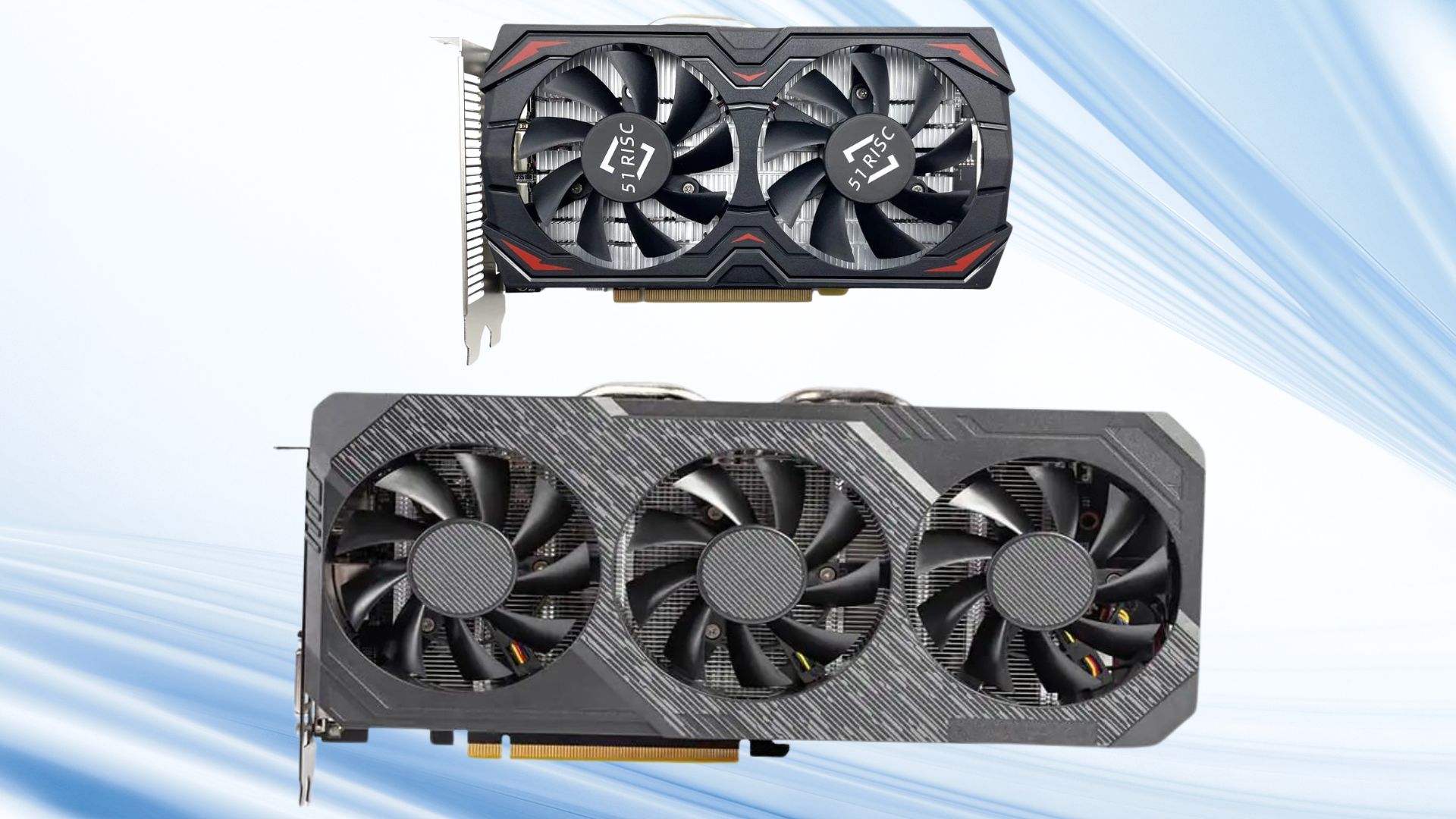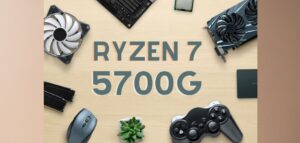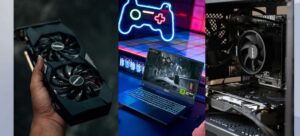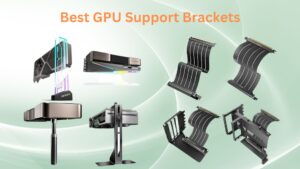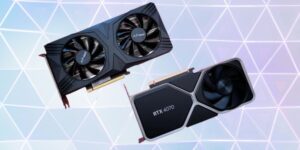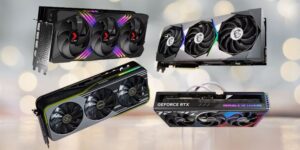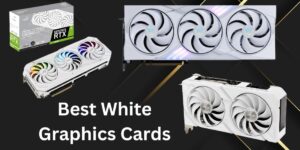Evaluating Which GPU Is Good For Deep Learning |
Deep learning, a specialized branch of machine learning, demands intensive computational resources to train complex neural networks on vast datasets. Graphics Processing Units (GPUs) have emerged as indispensable tools in this domain due to their parallel processing capabilities, which excel in handling the matrix multiplications and convolutions that characterize deep learning computations. The ability of GPUs to execute thousands of computations simultaneously significantly accelerates training times compared to traditional CPUs.
Choosing the right GPU is paramount as it directly impacts both the performance and cost-effectiveness of deep learning projects. Key factors to consider include the GPU’s architecture, such as the number of CUDA cores and Tensor Cores (in NVIDIA GPUs), memory bandwidth, and supported precision levels (like FP16 and FP32). These elements influence how efficiently the GPU can handle the computations essential for training and deploying neural networks. This guide delves into these critical considerations to aid in selecting a GPU tailored to deep learning requirements. It also evaluates leading GPUs renowned for their performance in accelerating deep learning tasks, providing insights into which models are best suited for different scales and types of deep learning projects.
Understanding GPU Architecture:
GPU architecture refers to the design and organization of a Graphics Processing Unit, which dictates how it performs computations. Modern GPUs are built with thousands of small processing cores that work in parallel to handle tasks simultaneously. They are optimized for parallel processing, making them highly efficient for tasks that involve large amounts of data and complex calculations.
Key components of GPU architecture include:
- CUDA Cores: These are the basic processing units in NVIDIA GPUs that execute instructions in parallel.
- Tensor Cores: Specialized units that accelerate matrix operations, crucial for tasks like deep learning.
- Memory: High-speed memory (VRAM) for storing data and instructions that GPUs can access quickly.
- Memory Bandwidth: Determines how quickly data can be transferred between the GPU and memory.
1: NVIDIA GPUs: A Dominant Force in Deep Learning:
NVIDIA GPUs have become synonymous with deep learning due to their exceptional parallel processing capabilities, optimized software ecosystem, and robust performance across a range of tasks from training complex models to inference. Here, we explore why NVIDIA GPUs are the preferred choice for deep learning applications and highlight some of the key models widely used in the field.
1. NVIDIA A100 Tensor Core GPU:
- CUDA Cores: 6912
- Tensor Cores: 432
- Memory: Up to 80 GB HBM2e
- Memory Bandwidth: 1.6 TB/s
- FP16 Performance: 312 TFLOPS
- FP32 Performance: 19.5 TFLOPS
The NVIDIA A100 Tensor Core GPU is a powerhouse designed specifically for deep learning workloads. Built on the groundbreaking NVIDIA Ampere architecture, it features 54 billion transistors and 40 GB of ultra-fast HBM2 memory, offering unprecedented computational performance and memory bandwidth. The GPU leverages third-generation Tensor Cores, delivering up to 20x faster AI performance compared to its predecessors.
It supports mixed-precision computations, optimizing both training and inference tasks. The A100 is equipped with NVLink for scalable GPU-to-GPU communication, essential for large-scale training tasks. Its Multi-Instance GPU (MIG) capability enables the efficient sharing of GPU resources across multiple users or tasks, enhancing utilization and flexibility in data centres. Overall, the NVIDIA A100 Tensor Core GPU sets a new standard in deep learning acceleration, making it ideal for researchers and enterprises pushing the boundaries of AI and machine learning applications.
2. NVIDIA RTX 3090:
- CUDA Cores: 10496
- Tensor Cores: 328
- Memory: 24 GB GDDR6X
- Memory Bandwidth: 936.2 GB/s
- FP16 Performance: 142 TFLOPS
- FP32 Performance: 35.6 TFLOPS
The NVIDIA RTX 3090, part of the GeForce RTX 30 series, offers compelling capabilities for deep learning tasks despite being primarily a gaming GPU. It features the Ampere architecture with 10,496 CUDA cores and 24 GB of GDDR6X memory, providing substantial computational power and memory capacity suitable for large-scale deep learning models. The RTX 3090 incorporates second-generation RT cores for real-time ray tracing and third-generation Tensor Cores optimized for AI workloads, delivering accelerated performance in training and inference tasks.
For deep learning, the RTX 3090’s large memory capacity is advantageous for handling extensive datasets and complex models. It supports mixed-precision calculations, balancing performance and precision requirements effectively. However, compared to NVIDIA’s dedicated data centre GPUs like the A100, the RTX 3090 lacks features such as NVLink for multi-GPU communication and advanced management capabilities like Multi-Instance GPU (MIG). Despite these limitations, its price-performance ratio and availability make it a popular choice among researchers and enthusiasts exploring deep learning, especially in scenarios where a dedicated data centre GPU may not be necessary or accessible.
3. NVIDIA Titan RTX:
- CUDA Cores: 4608
- Tensor Cores: 576
- Memory: 24 GB GDDR6
- Memory Bandwidth: 672 GB/s
- FP16 Performance: 130.5 TFLOPS
- FP32 Performance: 16.3 TFLOPS
The NVIDIA Titan RTX is a high-performance GPU aimed at professionals and enthusiasts, offering robust capabilities for deep learning applications. Powered by the Turing architecture, it features 4,608 CUDA cores and 24 GB of GDDR6 memory, providing ample computational power and memory capacity for training large neural networks. The Titan RTX includes Tensor Cores for accelerated AI workloads, supporting mixed-precision calculations that optimize both speed and precision in deep learning tasks.
For deep learning practitioners, the Titan RTX’s generous memory capacity is particularly beneficial for handling extensive datasets and complex models without frequent data movement bottlenecks. It supports CUDA, cuDNN, and other NVIDIA libraries essential for deep learning frameworks like TensorFlow and PyTorch, ensuring compatibility and performance optimization.
While the Titan RTX offers compelling performance, it lacks some features found in NVIDIA’s dedicated data centre GPUs, such as NVLink for scalable multi-GPU configurations and advanced management capabilities like Multi-Instance GPU (MIG). However, its accessibility and price-performance ratio make it a popular choice among researchers, engineers, and AI enthusiasts who require substantial computing power for deep learning experimentation, prototyping, and smaller-scale production deployments.
4. NVIDIA Quadro RTX 8000:
- CUDA Cores: 4608
- Tensor Cores: 576
- Memory: 48 GB GDDR6
- Memory Bandwidth: 672 GB/s
- FP16 Performance: 130.5 TFLOPS
- FP32 Performance: 16.3 TFLOPS
The NVIDIA Quadro RTX 8000 is a professional-grade GPU tailored for demanding workloads in AI and deep learning. Built on NVIDIA’s Turing architecture, it boasts 4,608 CUDA cores and 48 GB of GDDR6 memory, providing exceptional computational power and extensive memory capacity crucial for training large-scale neural networks. The Quadro RTX 8000 incorporates Tensor Cores, essential for accelerating AI tasks with mixed-precision capabilities, optimizing performance without compromising accuracy.
One of its key advantages for deep learning is its support for NVLink, enabling scalable multi-GPU configurations that enhance model training throughput and efficiency. This feature is particularly beneficial in environments where complex models require substantial parallel processing power. Additionally, the Quadro RTX 8000 includes ECC memory support, ensuring data integrity and reliability during compute-intensive operations, a critical requirement in professional settings.
While primarily designed for professional graphics and simulation tasks, the Quadro RTX 8000’s AI capabilities make it well-suited for researchers, data scientists, and engineers involved in AI development and deployment. Its certified drivers and compatibility with leading deep learning frameworks like TensorFlow and PyTorch ensure reliable performance and seamless integration into existing workflows, making it a preferred choice for organizations requiring robust AI capabilities alongside professional-grade graphics and compute power.
Why Choose NVIDIA GPUs for Deep Learning?
1. CUDA Architecture:
- NVIDIA GPUs leverage CUDA (Compute Unified Device Architecture), a parallel computing platform and application programming interface (API) model. CUDA enables developers to harness the GPU’s parallel processing power, significantly accelerating computations required for deep learning tasks such as matrix multiplications and convolutions.
2. Tensor Cores:
- Introduced with NVIDIA’s Volta architecture and further enhanced in Turing and Ampere architectures, Tensor Cores are specialized units designed to accelerate matrix operations commonly used in deep learning. These cores enable faster training and inference times, particularly with models that benefit from mixed-precision arithmetic (FP16 and FP32).
3. Extensive Software Support:
- NVIDIA GPUs are well-supported by deep learning frameworks like TensorFlow, PyTorch, and MXNet, among others. NVIDIA also provides optimized libraries such as cuDNN (CUDA Deep Neural Network library) and cuBLAS (CUDA Basic Linear Algebra Subprograms) that further enhance performance and ease development.
4. High Memory Bandwidth and Capacity:
- Deep learning often involves processing large datasets and complex models that require fast memory access. NVIDIA GPUs offer high memory bandwidth and capacity, allowing for efficient data transfer and storage during training and inference tasks.
5. Ecosystem and Developer Community:
- NVIDIA has built a strong ecosystem around its GPUs, including developer forums, documentation, and support channels. This ecosystem fosters innovation and collaboration among researchers, developers, and data scientists working in deep learning and related fields.
2: AMD GPUs: A New Challenger:
While NVIDIA dominates the deep learning GPU market, AMD has recently made significant strides with its RDNA architecture. AMD GPUs, such as the Radeon RX 6900 XT and Radeon VII, offer competitive performance and memory capacity. However, they lack dedicated tensor cores, which could affect performance in certain deep-learning tasks. Nonetheless, AMD’s increasing market share and growing support for deep learning frameworks make them a viable alternative.
1: AMD Radeon RX 6900 XT:
Architecture: RDNA 2
Stream Processors: 5120
Memory: 16 GB GDDR6
Memory Bandwidth: 512 GB/s
FP16 Performance: 46.08 TFLOPS
FP32 Performance: 23.04 TFLOPS
The AMD Radeon RX 6900 XT is a high-performance GPU primarily designed for gaming but also capable of handling certain deep learning tasks effectively. Powered by AMD’s RDNA 2 architecture, it features 5,120 stream processors and 16 GB of GDDR6 memory, offering substantial computational power and memory capacity suitable for moderate-sized deep learning models and datasets.
For deep learning, the RX 6900 XT lacks specialized AI-focused features like dedicated Tensor Cores found in NVIDIA’s GPUs. However, its parallel processing capabilities and AMD’s ROCm (Radeon Open Compute) platform support enable it to run deep learning frameworks such as TensorFlow and PyTorch with OpenCL support. This makes it a viable option for researchers and enthusiasts exploring AI applications on a budget or preferring AMD’s ecosystem.
Compared to NVIDIA’s dedicated AI GPUs, the RX 6900 XT may not match in raw AI performance or specialized AI features. Still, its price-performance ratio and availability make it an attractive option for hobbyists, researchers, and developers interested in exploring deep learning without needing the highest-end professional-grade GPUs. For larger-scale or enterprise-level deep learning applications, however, NVIDIA’s dedicated GPUs like the RTX series or Tesla GPUs generally offer more comprehensive support and performance optimizations for AI workloads.
2: AMD Radeon VII:
Architecture: Vega
Stream Processors: 3840
Memory: 16 GB HBM2
Memory Bandwidth: 1 TB/s
FP16 Performance: 27.9 TFLOPS
FP32 Performance: 13.9 TFLOPS
The AMD Radeon VII is a graphics card that, while primarily focused on gaming and content creation, can also be utilized for deep learning tasks. It features AMD’s Vega 20 architecture with 3,840 stream processors and 16 GB of HBM2 memory, providing substantial computing power and memory bandwidth suitable for certain deep learning applications.
For deep learning tasks, the Radeon VII benefits from its high memory bandwidth, which is advantageous for handling large datasets and complex neural networks. It supports OpenCL and AMD’s ROCm (Radeon Open Compute) platform, enabling compatibility with popular deep learning frameworks such as TensorFlow, PyTorch, and others. However, compared to NVIDIA’s GPUs designed specifically for AI workloads, the Radeon VII lacks dedicated Tensor Cores and optimized AI hardware features, which may limit its performance in certain AI tasks, especially those requiring extensive matrix operations and mixed-precision calculations.
Despite these limitations, the Radeon VII can still serve as a cost-effective option for researchers, enthusiasts, and small-scale deployments in deep learning where budget constraints or AMD ecosystem preference are considerations. Its compute performance and memory capacity makes it suitable for entry-level to mid-range deep learning experimentation and development, although users may experience performance gaps compared to higher-end NVIDIA GPUs dedicated to AI and machine learning.
Considerations for Using AMD Radeon GPUs in Deep Learning:
- Software Support: NVIDIA GPUs are widely supported by deep learning frameworks like TensorFlow, PyTorch, and others, with optimized libraries such as cuDNN. AMD GPUs have historically had less extensive support, which can impact performance and ease of integration.
- Performance Optimization: While AMD Radeon GPUs can perform well in certain deep learning workloads, their architecture and optimization may not match the specialized capabilities of NVIDIA’s Tensor Cores and CUDA cores for deep learning tasks that require high computational throughput and precision.
- Cost and Availability: AMD Radeon GPUs may offer cost advantages over NVIDIA’s high-end GPUs like the A100 or RTX series, making them attractive for budget-conscious projects or where specific features are not critical.
- Future Developments: AMD continues to invest in GPU technology and may introduce new architectures or optimizations that improve their suitability for deep learning in the future. Keeping an eye on updates and benchmarks can help assess their evolving competitiveness in this field.
Key Factors to Consider:
When selecting a GPU for deep learning, several factors should be taken into account:
CUDA Cores:
- CUDA (Compute Unified Device Architecture) cores are the processing units within an NVIDIA GPU that handle parallel computations. More CUDA cores generally mean better performance for deep learning tasks.
Tensor Cores:
- Introduced by NVIDIA in their Volta, Turing, and Ampere architectures, Tensor Cores accelerate matrix operations, which are fundamental to deep learning. They provide significant performance improvements for mixed-precision training.
Memory Capacity and Bandwidth:
- Deep learning models, especially large ones, require substantial memory. More VRAM (Video RAM) allows for training larger models and handling bigger datasets. Memory bandwidth, which determines the speed at which data can be read from or written to the memory, also plays a critical role.
FP16 and FP32 Performance:
- Deep learning frameworks often use mixed-precision training, which involves computations in both 16-bit (FP16) and 32-bit (FP32) floating-point formats. GPUs with high FP16 and FP32 performance can accelerate training times.
Compatibility and Ecosystem:
- Ensure the GPU is compatible with popular deep learning frameworks such as TensorFlow, PyTorch, and Keras. NVIDIA GPUs have extensive support for these frameworks and come with CUDA and cuDNN libraries that optimize performance.
Power Consumption and Cooling:
- High-performance GPUs consume a lot of power and generate significant heat. Consider the power requirements and cooling solutions to ensure the stability and longevity of your hardware.
Conclusion:
Selecting the ideal GPU for deep learning requires a comprehensive analysis of various factors, including architecture, memory capacity, performance, budget, and compatibility. NVIDIA GPUs, particularly the RTX 3080 and RTX 3090, stand out as top choices due to their exceptional performance, memory capacity, and tensor core support. AMD GPUs, such as the Radeon RX 6900 XT, offer compelling alternatives with competitive performance and memory capacity. Ultimately, the choice of GPU depends on individual requirements, budget constraints, and the specific deep-learning tasks at hand.
FAQs: GPU For Deep Learning
Q: What is the importance of tensor cores in deep learning GPUs?
A: Tensor cores accelerate matrix operations commonly used in deep learning tasks, enhancing overall performance.
Q: Are AMD GPUs suitable for deep learning applications?
A: Yes, AMD GPUs like the Radeon RX 6900 XT offer competitive performance and memory capacity for deep learning tasks.
Q: How much memory capacity is required for deep learning models?
A: Deep learning models often require substantial memory capacity to process large datasets efficiently.
Q: Are there budget-friendly GPU options for deep learning?
A: Yes, GPUs like the NVIDIA RTX 3070 and AMD Radeon RX 6800 XT offer solid performance at a more affordable price point.
Q: Can cloud-based GPU solutions be used for deep learning?
A: Yes, cloud providers like AWS, Google Cloud, and Microsoft Azure offer GPU instances for deep learning, eliminating the need for upfront hardware investment.
Last Updated on 21 January 2025 by Ansa Imran

Ansa Imran, a writer, excels in creating insightful content about technology and gaming. Her articles, known for their clarity and depth, help demystify complex tech topics for a broad audience. Ansa’s work showcases her passion for the latest tech trends and her ability to engage readers with informative, well-researched pieces.

